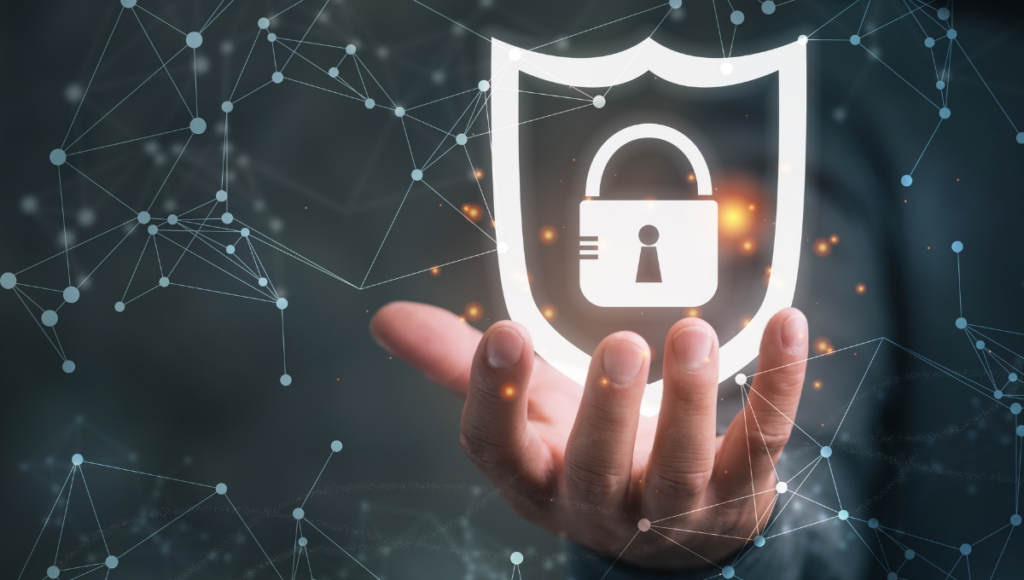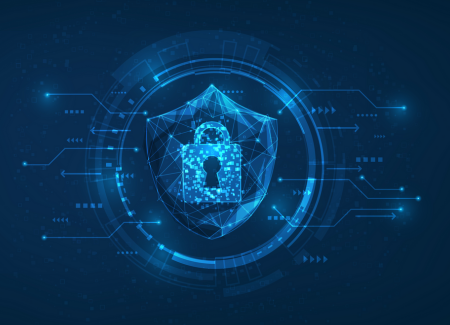Stay Ahead of the Curve: New Cybersecurity Technologies for 2024

- What are the 10 Latest Technologies Reshaping Cybersecurity Tech for 2024?
- How Can These New Technologies Help Improve Cybersecurity Defenses?
- Which Specific Cybersecurity Challenges do These Technologies Address?
- How Can Organizations Integrate These Technologies Into Existing Security Measures?
The digital era offers us huge opportunities and significant challenges. As our dependence on technology increases, information technology security becomes very important. Threats to cybersecurity are always evolving, and keeping up with them requires using new solutions. In this article, we discuss the 10 new cybersecurity tech trends that are changing things in 2024. We look at how they can strengthen protection, tackle important problems, and fit with current security methods.
What are the 10 Latest Technologies Reshaping Cybersecurity Tech for 2024?
1. AI-Enhanced Threat Detection
AI and Machine Learning (ML) are revolutionizing cybersecurity tech. AI-powered threat detection systems can analyze vast amounts of data to identify and respond to anomalies in real time, significantly improving threat detection accuracy. Furthermore, ML algorithms in cybersecurity companies can learn and adapt over time, becoming adept at recognizing even the most sophisticated cyberattacks.
2. Extended Detection and Response (XDR)
Traditional security tools often operate in silos, making it difficult to get a holistic view of potential threats. Furthermore, Extended Detection and Response (XDR) platforms consolidate data from various security tools, providing a unified view of security incidents across the entire IT infrastructure. This comprehensive picture empowers security teams to investigate and respond to threats more effectively.
3. Zero-Trust Security
Zero trust is a security model that eliminates the concept of implicit trust within a network. Every user and device must be continuously authenticated and authorized before accessing resources. Hence, this approach taken by cybersecurity companies minimizes the potential damage caused by compromised credentials or malware.
4. Blockchain for Secure Data Storage
Blockchain technology, renowned for its secure and transparent nature, is finding new applications in cybersecurity. This tech can be used to store and manage sensitive data in a way that is tamper-proof and auditable. This technology offers a powerful tool for organizations that handle highly confidential information.
ALSO READ: What is Cybersecurity and Why is it a Great Career Choice for You
5. Quantum-Resistant Cryptography
The rise of quantum computers poses a significant challenge to traditional encryption methods. However, quantum-resistant cryptography is being developed to address this issue. Additionally, these new encryption algorithms will be able to withstand the processing power of quantum computers, ensuring the continued confidentiality of sensitive data.
6. Secure Access Service Edge (SASE)
The increasing adoption of cloud computing and remote workforces necessitates robust access management solutions. Secure Access Service Edge (SASE) converges security functions like identity and access management, data loss prevention, and network security into a single cloud-based service. As a result, this approach streamlines security management and enhances access control.
7. Internet of Things (IoT) Security
The burgeoning Internet of Things (IoT) landscape brings new security concerns. IoT devices are often resource-constrained and may have limited security capabilities. Cybersecurity tech companies are developing solutions specifically designed to secure IoT devices, such as firmware updates that address vulnerabilities and robust authentication protocols.
8. Homomorphic Encryption
Homomorphic encryption allows for data to be processed while still encrypted, consequently enabling secure cloud computing. Moreover, this technology ensures that sensitive information remains protected even during computation.
9. Cybersecurity Mesh Architecture
The growing complexity of IT environments, with cloud, on-premises, and hybrid deployments, necessitates a more interconnected security approach. Moreover, cybersecurity mesh architecture utilizes a distributed network of security services that communicate and collaborate with each other. This approach provides comprehensive security coverage across all connected devices and applications, regardless of location.
10. Biometric Authentication
Traditional password-based authentication is increasingly vulnerable to breaches. Biometric authentication offers a more secure solution by utilizing unique physical or behavioral characteristics, such as fingerprints, facial recognition, or voice patterns. Hence, this technology strengthens access control and minimizes the risk of unauthorized access to sensitive data and systems.
How Can These New Technologies Help Improve Cybersecurity Defenses?
1. Enhancing Data Security
New cybersecurity tech like quantum cryptography and homomorphic encryption significantly enhance data security by encrypting data more effectively. Furthermore, they protect against both interception and unauthorized access.
2. Increasing Response Speed
AI tools and automated security platforms enable quicker responses to threats, thus reducing potential damage. Moreover, their real-time processing capabilities ensure that threats are dealt with promptly.
3. Reducing Human Error
Technologies like Software-Defined Parameter (SDP) and automated platforms decrease the reliance on human monitoring, consequently reducing the margin for error. Furthermore, these technologies ensure more consistent and reliable cybersecurity practices.
4. Expanding Threat Detection
AI-enhanced systems and advanced phishing defenses expand the scope of threat detection, thus identifying more potential threats. Moreover, they adapt to new cybersecurity trends, continuously improving their detection capabilities.
5. Strengthening Compliance
Blockchain technology and zero-trust architectures help organizations meet stringent compliance requirements by providing robust security measures and detailed access controls. Furthermore, these cybersecurity trends ensure that all data handling complies with international standards.
ALSO READ: The 5 Most Common Cyber Threats and How to Tackle Them
Which Specific Cybersecurity Challenges do These Technologies Address?
1. Advanced Persistent Threats (APTs)
Technologies like predictive AI tools and quantum cryptography are particularly effective against APTs, as they enhance early detection and secure data transmission. Furthermore, they provide a proactive defense mechanism that adapts to evolving threats.
2. Insider Threats
Zero-trust architectures and SDP directly address insider threats by enforcing strict access controls and continuously verifying all network activities. These technologies ensure that only authorized personnel can access sensitive information.
3. Data Breaches
Homomorphic encryption and blockchain prevent data breaches by securing data at rest and in transit. Additionally, their inherent security features protect against unauthorized data manipulation and access.
4. Phishing Attacks
Advanced phishing defense mechanisms and AI-enhanced detection systems effectively counter phishing attacks by identifying and neutralizing phishing attempts before they reach end users. Moreover, these technologies are continuously updated to combat new phishing techniques.
5. Compliance Risks
Automated security platforms and blockchain technology ensure that cybersecurity measures are compliant with the latest regulations and standards. Also, they provide auditable records of security practices and incident responses, thus supporting compliance efforts.
How Can Organizations Integrate These Technologies Into Existing Security Measures?
A. Conduct a Security Assessment
The first step is to conduct a thorough security assessment to identify vulnerabilities and determine which technologies can best address them. This assessment should evaluate the organization’s IT infrastructure, security policies, and user behavior to identify potential weaknesses.
B. Develop a Phased Implementation Plan
Once vulnerabilities are identified, organizations can develop a phased implementation plan that prioritizes the most critical needs. This plan should outline the specific technologies to be implemented, the required resources, and the timeline for deployment.
C. Ongoing Training and Education
Finally, ongoing training and education for employees on these new cybersecurity tech trends are essential for maximizing their effectiveness. Employees should be educated on how to identify and report suspicious activity, as well as how to use new security measures effectively. This will ensure that the entire organization is aligned in its cybersecurity efforts.
ALSO READ: Zero Trust Architecture: Top 5 Ways to Boost Cyber Resilience
The integration of new cybersecurity tech offers a promising avenue for enhancing organizations’ digital defenses. Each of these technologies addresses specific challenges and contributes to a robust security posture. For those looking to understand and apply these innovations further, Emeritus’ online cybersecurity courses provide comprehensive training and insights tailored to the evolving needs of information technology security. Embrace the future of cybersecurity by exploring these courses and staying ahead of threats in an ever-changing digital world.
Write to us at content@emeritus.org








